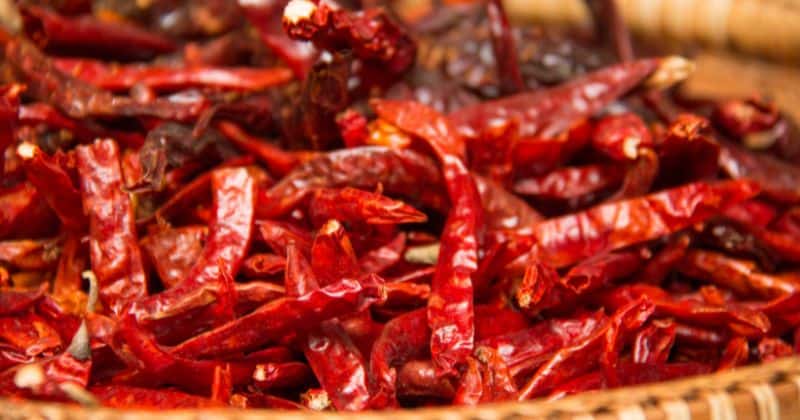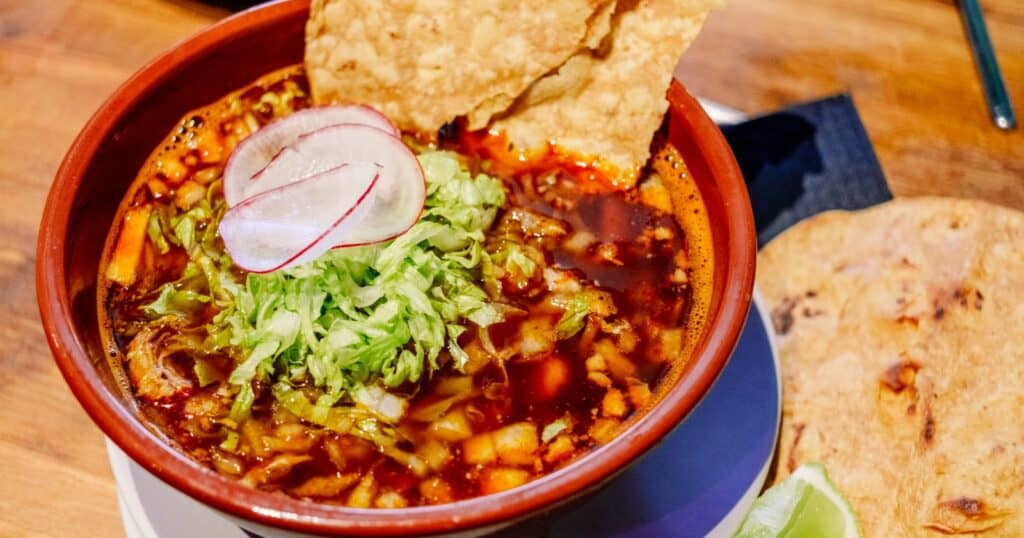Mexican food has a reputation for bringing some serious heat. One bite of a smoky chipotle chili or a salsa made with ripe jalapeños can set your mouth ablaze!
But why does authentic Mexican cuisine pack such a punch compared to other ethnic cooking traditions? There are a few key reasons:
It’s all about the chilies. Mexican cooking relies heavily on fresh and dried chili peppers native to Mexico. Varieties like jalapeños, habaneros, and poblanos all contain a spicy compound called capsaicin that gives them their trademark fire.
The climate helps. Mexico’s hot climate and soil conditions allow chili peppers to thrive, making them readily available to cooks across the country.
It’s tradition. Indigenous cultures like the Aztecs and Mayans started the trend of using chilies for flavor and medicine. This usage continued into modern Mexican cuisine.
It adds depth. Chili peppers give Mexican dishes a signature smoky warmth and kick that brings out the other complex flavors.
Now, not every Mexican meal has to scorch your mouth. The spiciness ranges depending on the region, restaurant, and individual dish. But no matter what, chilies manage to weave their enticing heat into authentic Mexican cooking.
Ready to discover more about Mexican cuisine’s addictive, fiery flavors? Let’s dig in!
It’s All About Chilies, Chile Head

The prime factor making Mexican food spicy is the prominent use of fresh and dried Mexican chilies. These flavorful peppers are essential to the cuisine.
Common Mexican chili varieties include:
- Jalapeños – A very hot green chili used in salsa, guacamole, and numerous dishes
- Serranos – Small, really spicy green peppers perfect for salsas
- Poblanos – Mild dark green peppers often stuffed with cheese
- Habaneros – Extremely hot orange peppers used in Yucatecan cooking
- Chipotles – Smoked and dried red jalapeños with a kick
- Anchos – Dried poblanos with a sweet and mild taste
These Mexican chilies contain a compound called capsaicin which triggers
That’s why recipes call for specific pepper varieties and quantities – to achieve just the right spicy impact.
Why Capsaicin Causes That Burning Feeling
Capsaicin gives Mexican chilies their trademark fire. Here’s an overview of how it works:
- Found in chili seeds and membranes
- Activates pain receptors in the mouth
- Initially causes inflammation, then numbness
- Triggers endorphins that give a “high”
This unique reaction makes spicy food addictive for chili-heads! With the right precautions, even
Spices with History: Chilies in Mexican Cuisine
Chili peppers have been integral to Mexican cooking for thousands of years. Here’s a quick history:
- Used since pre-Hispanic times by Aztecs, Mayans, and other groups
- Key ingredient in native cuisine and medicine
- Adopted into Spanish colonial food in the 1500s
- Spread globally through trade to become ubiquitous
Today, chili peppers remain a culinary foundation across Mexico’s regional cuisines. Their popularity shows no sign of waning.
Why Mexicans Love Their Chilies
In Mexico, a meal isn’t complete without some
- Love of spicy food starts in childhood
- Serving chili dishes shows hospitality
- Many cooks use homegrown peppers
- Spices used in festivals and celebrations
- Chilies help cope with Mexico’s hot climate
The cuisine is a huge source of national pride. For most Mexicans, chilies aren’t just a taste – they’re tradition.
Regional Differences in Spice Levels
It’s a myth that all Mexican food is super spicy. Flavor profiles vary by region:
- Northern states like Sonora have milder cuisine with more beef and wheat dishes.
- Central and southern regions rely on complex, spicy moles and more corn-based foods.
- Coastal areas balance heat with seafood, tropical fruits, and citrus.
- The Yucatan Peninsula is known for habanero chilies and achiote seasoning.
So the spiciness depends on where you travel in Mexico and local ingredients used. But no matter what, chili peppers play a key role in every regional cuisine.
Handling the Signature Spice
If you find authentic Mexican food too hot, don’t avoid it! Here are some tips to help you handle the signature
- Request less or no chili peppers in your dish. Most restaurants gladly accommodate.
- Seek out salsas and enchilada sauces marked “suave” for a milder kick.
- Sip water between bites to calm the burn. Sugary aguas frescas also help tame heat.
- Add cooling elements like cheese, sour cream, or avocado to your meal. The fat coats your mouth.
- Keep tortillas, rice, or beans on hand to absorb some of the spiciness.
- Take small bites of spicy dishes and pace yourself. Don’t just gulp it down!
With these tricks, you can savor authentic Mexican flavors at your own comfort level. Don’t miss out on the amazing cuisine.
Why Mexican Food is So Satisfying
It’s not just the chilies that make Mexican food irresistible. The complex layers of flavor also hook people:
- Depth from spices like cumin, garlic, cinnamon
- Brightness from citrus juices and herbs
- Satisfaction from hearty beans and corn
- Cooling contrast from cheese, avocado, and cilantro
Signature dishes like tacos al pastor, chiles rellenos, or pozole deliver sweet, savory, citrusy, and creamy sensations all in one bite. Even solo ingredients like fresh tortillas, guacamole, and salsas are crave-worthy.
This symphony of textures and flavors makes Mexican food unforgettable and addictive worldwide. The passion comes through in every tasty bite!
Health Perks of Mexican Cuisine
Think spicy food just leads to stomach troubles? Think again! Chile peppers and other Mexican ingredients offer legit benefits:
- May boost metabolism and aid weight loss
- Help clear up congestion
- Reduce inflammation
- Contain antioxidants that promote heart health
- Provide anti-cancer properties
Moderation is key to prevent discomfort. But overall, Mexican cuisine can be a healthy component of your diet.
Avoiding Discomfort from Spicy Food
Yes, Mexican dishes can provoke unpleasant reactions like:
- Heartburn
- Stomach pain
- Sweating
- Flushing skin
This is due to the irritation and inflammation caused by capsaicin. Here are some tips to prevent discomfort:
- Only eat spicy food with other mild ingredients to buffer it
- Limit alcohol, as it worsens capsaicin’s effects
- Opt for grilled meat instead of fried versions
- Take antacids to relieve heartburn
- Stay hydrated during and after the meal
- Listen to your body’s limits with spicy food
With proper care, anyone can reap the pleasurable essence of Mexican cuisine. Be sure to honor your personal tolerance.
Satisfying Milder Mexican Fare

You can avoid tummy troubles but still enjoy delicious Mexican food. Just opt for naturally milder dishes:
- Tacos dorados – filled with chicken or beef, just add some lime instead of hot salsa
- Quesadillas – try fillings like huitlacoche, mushrooms, or cheese for subtle flavor
- Torta ahogada – literally “drowned sandwich” – order this sandwich without the spicy arbol pepper sauce
- Pozole – traditional hominy and pork stew – ask for it “sin chile”
- Ceviche – fresh raw fish or shrimp “cooked” in citrus juice – guaranteed zero spiciness!
With so many options, there’s no reason to miss amazing Mexican flavors. Customize to your tastes.
Getting Used to the Heat
If you’re new to Mexican food, you can slowly acclimate your palate to handle more
- Start with a bit of mild salsa on eggs or tacos. Work up to hotter salsa over time.
- Add small dashes of Mexican hot sauce like Cholula to dishes. Increase amounts gradually.
- Mix a few diced jalapeños or habaneros into foods, in controlled portions.
- Have spicy snacks like chilies rellenos or peanuts to get used to chili flavors.
- Try side dishes with a kick, like Mexican street corn or rajas con crema.
- Build up to spicier entrees like enchiladas, chili relleno, or tacos al pastor.
With patience and persistence, you can train yourself to appreciate chili heat! Just take it slow.
Mexican Spice with Health in Mind
Here’s the good news about enjoying Mexican cuisine, even with a lower
- Many dishes can be adapted to your preferences – just ask!
- Opt for grilled or baked versions instead of fried
- Watch portions of cheese, sour cream, guacamole, and rice
- Load up on fresh veggies like onions, tomatoes, and peppers
- Choose corn tortillas instead of flour
- Enjoy sides of whole beans for fiber
- Order fish, shrimp, chicken, or lean pork instead of red meat
- Always pair spicy food with non-alcoholic drinks
With some simple adjustments, you can healthfully indulge in Mexican deliciousness. Listen to your body and enjoy a variety of options in moderation.





